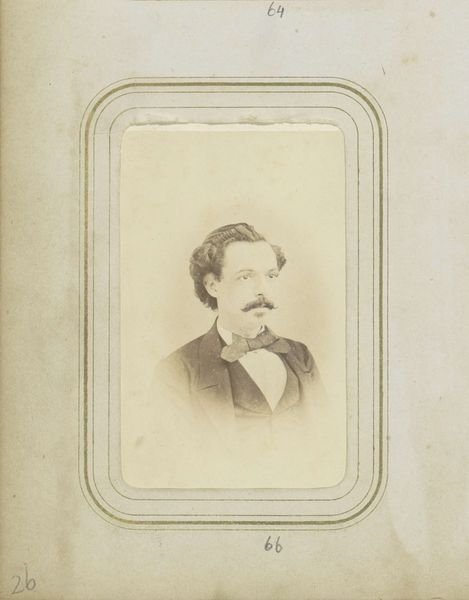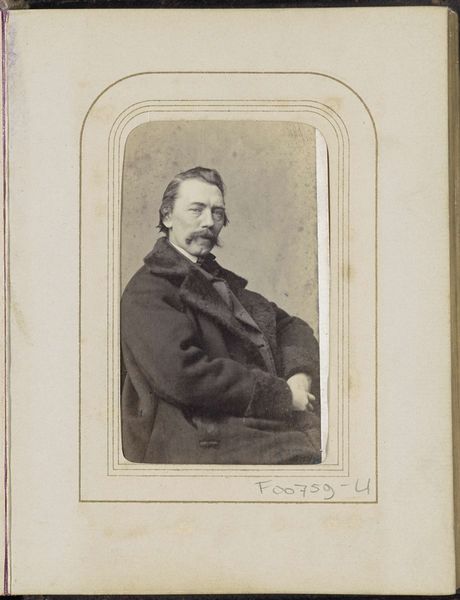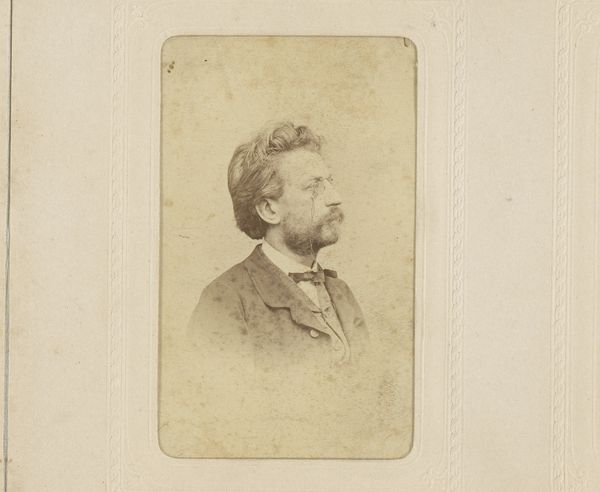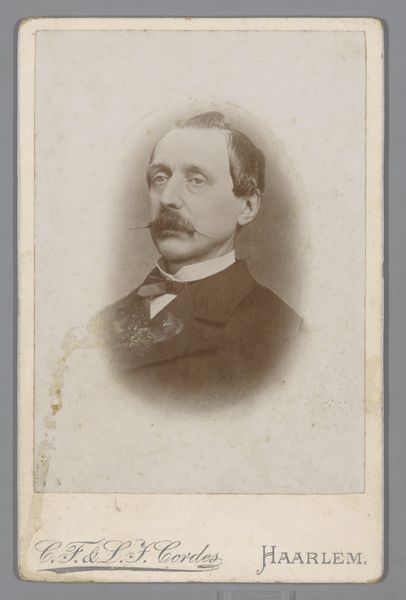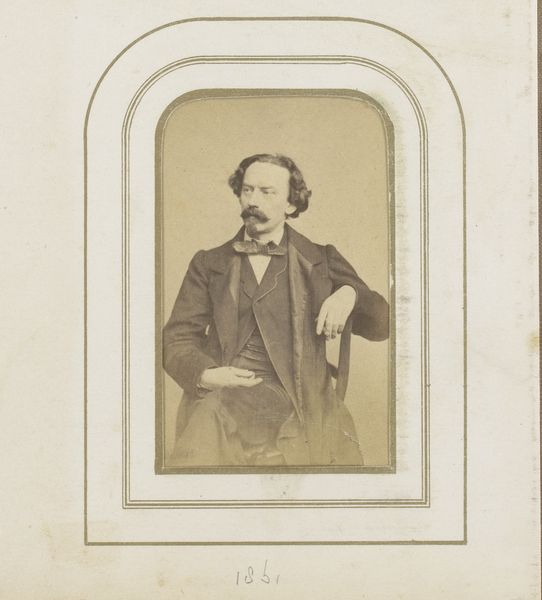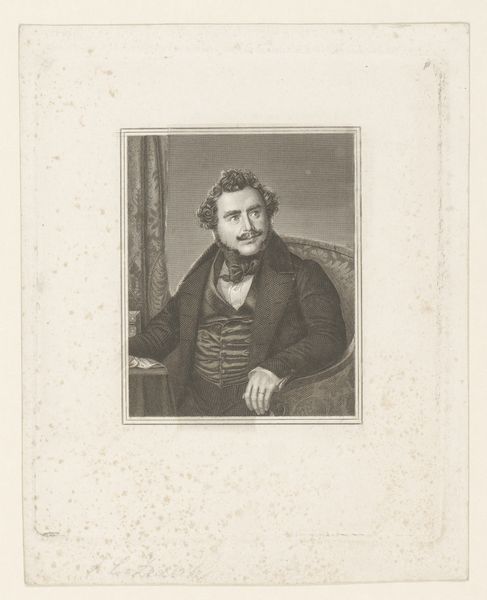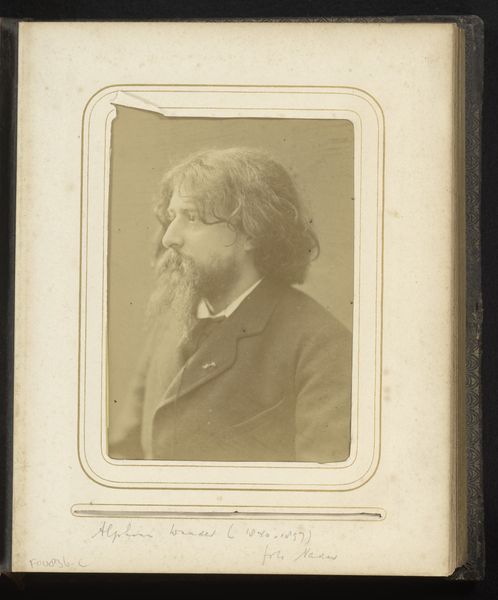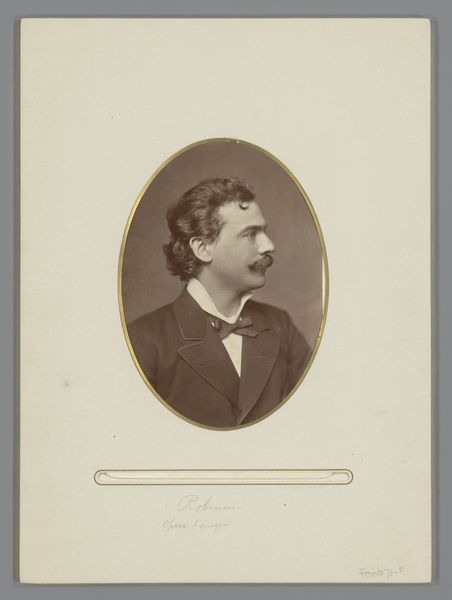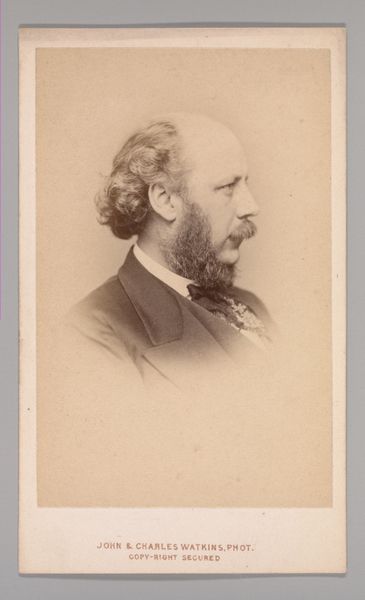![Untitled [portrait of an unidentified man] by Jeremiah Gurney](/_next/image?url=https%3A%2F%2Fd2w8kbdekdi1gv.cloudfront.net%2FeyJidWNrZXQiOiAiYXJ0ZXJhLWltYWdlcy1idWNrZXQiLCAia2V5IjogImFydHdvcmtzLzNlNzU1ZGVlLTIyOTYtNDc2MS04MjE2LWI2YzYxYjdiMjUyMS8zZTc1NWRlZS0yMjk2LTQ3NjEtODIxNi1iNmM2MWI3YjI1MjFfZnVsbC5qcGciLCAiZWRpdHMiOiB7InJlc2l6ZSI6IHsid2lkdGgiOiAxOTIwLCAiaGVpZ2h0IjogMTkyMCwgImZpdCI6ICJpbnNpZGUifX19&w=3840&q=75)
Untitled [portrait of an unidentified man] 1858 - 1869
0:00
0:00
daguerreotype, photography
#
portrait
#
daguerreotype
#
photography
#
portrait reference
#
united-states
#
portrait art
Dimensions: 3 9/16 x 2 3/16 in. (9.05 x 5.56 cm) (image)4 x 2 7/16 in. (10.16 x 6.19 cm) (mount)
Copyright: Public Domain
Curator: Before us is an intriguing daguerreotype. It's an untitled portrait of an unidentified man by Jeremiah Gurney, likely taken between 1858 and 1869. The work resides here at the Minneapolis Institute of Art. Editor: He looks melancholic, doesn't he? Almost theatrical in the way his hair is styled. It feels like he is consciously posing. The detail, despite the image's age, is remarkable; it's really captivating. Curator: Indeed, daguerreotypes captured remarkable detail, though they demanded long exposure times. Think about the sitter, enduring stillness, to participate in an emerging middle-class culture of portraiture. Photography offered an unprecedented form of personal and familial documentation to a broader public than ever before. Editor: It makes me think of the archetype of the Romantic poet or the Byronic hero—brooding, intense. That heavy brow, the somewhat untamed hair... It aligns with symbols of inner turmoil, intellectual depth. The beard acts almost like a mask, hiding something deeper. Curator: It's a very carefully constructed image. The composition reflects a calculated decision-making, which is to reveal the man's professional stature and social respectability, by what he wears, in an increasingly democratized image culture. Photography was vying to assert itself amongst more established arts such as painting. This required establishing conventions. Editor: What I also notice is how little space he occupies on the card. A portrait but, somehow, diminished. Perhaps symbolic of his place within society? There is such emptiness below. Curator: Good point. Remember this format, the carte-de-visite, was designed for circulation, for albums. Perhaps this lack of scale highlights that the photo was also a commodity. Its intimate size suggests the photo also embodies personal possession and remembrance, yet also designed for the networks of gift exchange between friends, family, and acquaintances. Editor: A poignant mix of self-fashioning, technological innovation and perhaps even a little yearning. So many stories embedded within this one small image. Curator: It really captures a transformative period in the history of portraiture, doesn’t it? From painting, for the elite, to widespread photographs, affordable to anyone aspiring to capture themselves for eternity.
Comments
No comments
Be the first to comment and join the conversation on the ultimate creative platform.



